Pool filters are a marvelous invention. They remove particulate matter that would make the water cloudy, and pathogens that would make us sick. Without circulation and filtration, you have a stagnant pond. Combined with sanitation, and you have clean & clear swimming pool water. However – pool filters can malfunction, and they sometimes do this slowly, and sometimes all at once, with catastrophic failure.
This blog post is about both, the most common, and the most catastrophic Sand, Cartridge and D.E. pool filter problems. Normal wear and tear issues you can expect, and rare failures that you probably won’t, but should aware of.
Common Sand Filter Problems:
- Leaking multiport valves. Not really a sand filter problem, but a problem with the attached valve, either on top or attached on the side of the filter tank. An internal gasket, called a spider gasket, keeps water channeling through the correct ports, inside the valve. When the gasket becomes twisted, loose or excessively worn, water moving through the valve can push into other ports, like the waste line.
- Bad Sand. Over time, the sharp edges of your filter sand become worn and this creates larger gaps between the sand grains. The result is less effective filtering, as the sand grains lose some ability to trap very small particles. Another effect is that the water may frequently become cloudy, or other adverse water conditions take longer to clean up.
- Broken Laterals: Sand filters use small pipes in the bottom of the tank, which have small slits in them, to allow the water to be pushed through, but not the sand. After water is pushed into the laterals, it is directed up a pipe, on its way out of the filter. Sand blowing into the pool, around the returns, could mean a cracked lateral.
Catastrophic Sand Filter Problems:
- Tank Failure: Deadheading the filter, or closing off all the valves after the filter, on the return or backwash lines, can lead to tank rupture. Always watch the pressure gauge as you turn the pump back on. If pressure spikes, shut the pump off quickly and check for any closed valves. Another type of tank failure can occur without fault to valve positions, some of the cheaper thermoplastic tanks do occasionally separate on the seam.
- Bulkhead failure: These are the connections in and out of the filter. On commercial tanks, with a side mounted valve, there are two bulkheads, or connection ports for the incoming and outgoing pipes. On a top-mounted valve tank, the collar of the tank can separate from the tank, for bolt on valves, or crack on the edge where the clamp mounts.
- Valve Failure: The multiport valve on the top or the side, or the push-pull valve on the side of the tank can rupture from freeze damage, tree damage or from being deadheaded. A more common problem is with the internal gasketing or parts that are causing the valve to malfunction.
Common Cartridge Filter Problems:
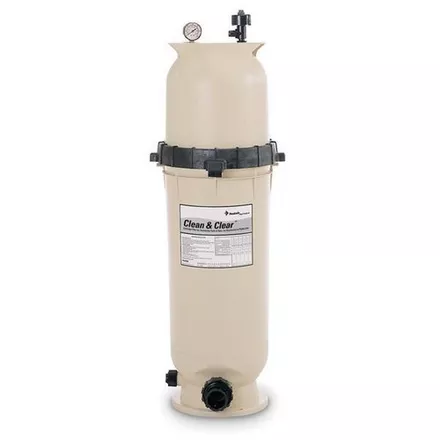
- Dirt Bypass: If you have a problem with dirt getting ‘around’ your filter cartridge, check that it’s securely seated into the bottom of the tank. Some cartridge filters have additional internal parts that help to direct the water through the cartridge, and not around it.
- Short Filter Cycles: The length of time between cleanings of the cartridge. If you find yourself cleaning them weekly, to maintain the higher flows and lower pressure – you probably need to replace the cartridges. A properly sized filter should be able to go 3-5 weeks between cleanings. If you can’t achieve this even with new cartridges, your filter is probably too small for your pool.
- Oily Cartridges: Pool filter cartridges can trap oils pretty well, but this can clog the pores and reduce the filtering ability, requiring more frequent cleanings with a Filter Cleaner product. Use of enzymes in your pool can help control oils, consuming them in the pool, before they reach the filter.
Catastrophic Cartridge Filter Problems:
- Cracked Cartridges: Splits on the ends of the cartridge, through the heavy rubber, are bad news. Time for a new filter cartridge. Some crack with age, other from deadheading or preventing the water flow out of the tank.
- Popped Tops: Either from deadheading the exiting water flow, or from a full tank of water freezing, the top can blow off of the filter tank. A filter tank under pressure, with a loose or misaligned clamp band, can ‘pop the top’ or ‘blow its lid’. This can be dangerous, fatally dangerous. Always watch the pressure gauge when starting your filter pump.
- Crushed Cartridges: Can also occur from too much water pressure, or from deadheading the filter water. I’m noticing a trend here, deadheading the exiting water flow from a filter creates a lot of problems.
Common D.E. Filter Problems:
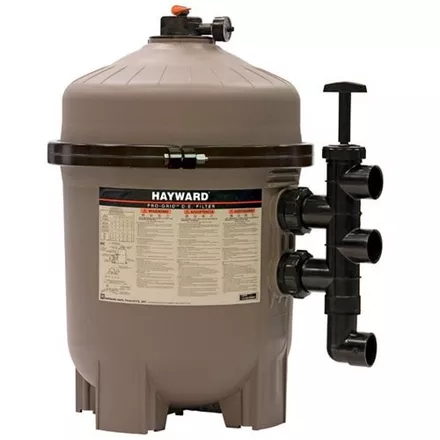
- DE Blow-Back: If DE powder is coming into the pool, you may have torn filter grid fabric. Or, you could have a cracked top manifold, or missing air bleeder. The standpipe o-ring could be missing, or the filter valve could be allowing some DE powder to bypass the filter as you add it new.
- Leaking Drain Valve: Most DE filters have a threaded cap with an o-ring. Keep this o-ring lubricated and use some Teflon tape on the threads. Don’t overtighten this plug, or you may crack the underdrain assembly.
- Calcium Clogged: Minerals can clog up the pores of the DE filter grid fabric, slowing the flow and raising the filter pressure. Soaking your DE grids in a mild acidic solution, or using a Filter Cleaner chemical, can dissolve these minerals, and restore a proper flow rate.
Catastrophic D.E. Filter Problems:
- Tree Damage: If you have large trees surrounding your filter equipment, consider a lean-to type of shed to protect the equipment. It can be open on all four sides, with a sturdy roof. Also will keep the rain off the pump, an added benefit. If you have a gas heater, you will need to open the roof above the heater, or install vent piping, according to manufacturer’s instructions.
- Clamp Failure: Older filter clamps have weld spots and small threads that can fail under pressure. This can lead to the top blowing off, some DE filter lids have been blown 50 feet in the air. Many have come down to injure or kill people. More often, they blow off sideways, and if you are standing next to the filter, look out! When reinstalling the clamp on your filter, make sure it’s properly aligned on both tank halves, and that you have tightened the band securely. On newer clamps, which are larger and have a spring in the mechanism, tighten the nut until all coils of the spring are touching each other.
- Pinholes: Stainless steel DE filter tanks (now obsolete) can develop pinholes over time, which spring small leaks. A good welder could make a repair to a steel tank, but usually a tiny hole means a filter replacement. I have never been able to make a permanent epoxy patch to the inside of a pool filter tank.

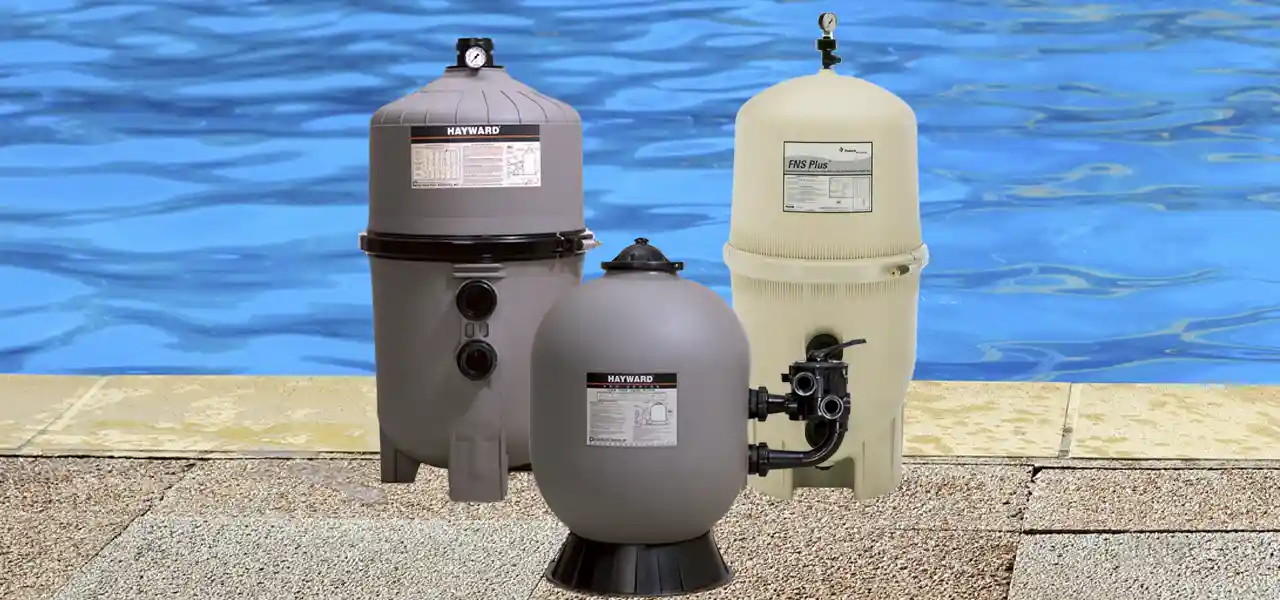

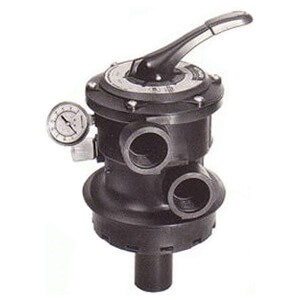
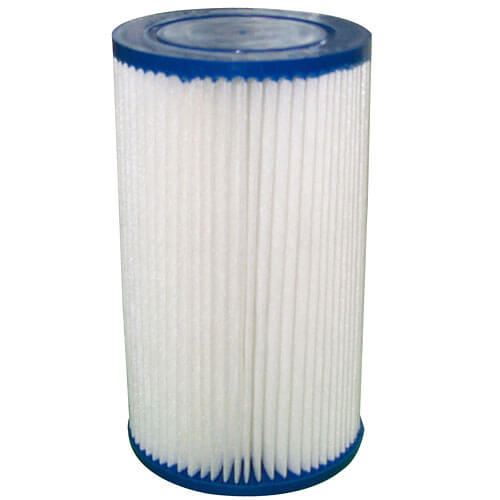
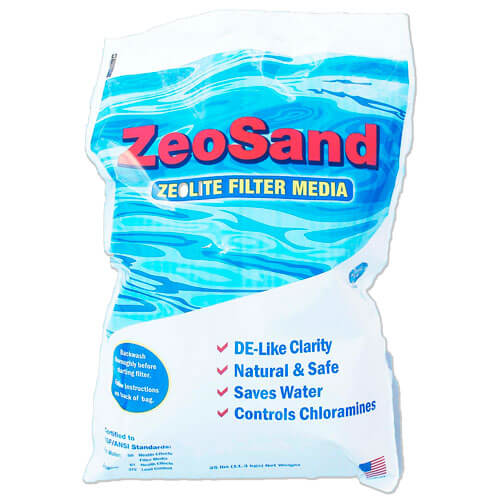
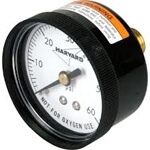
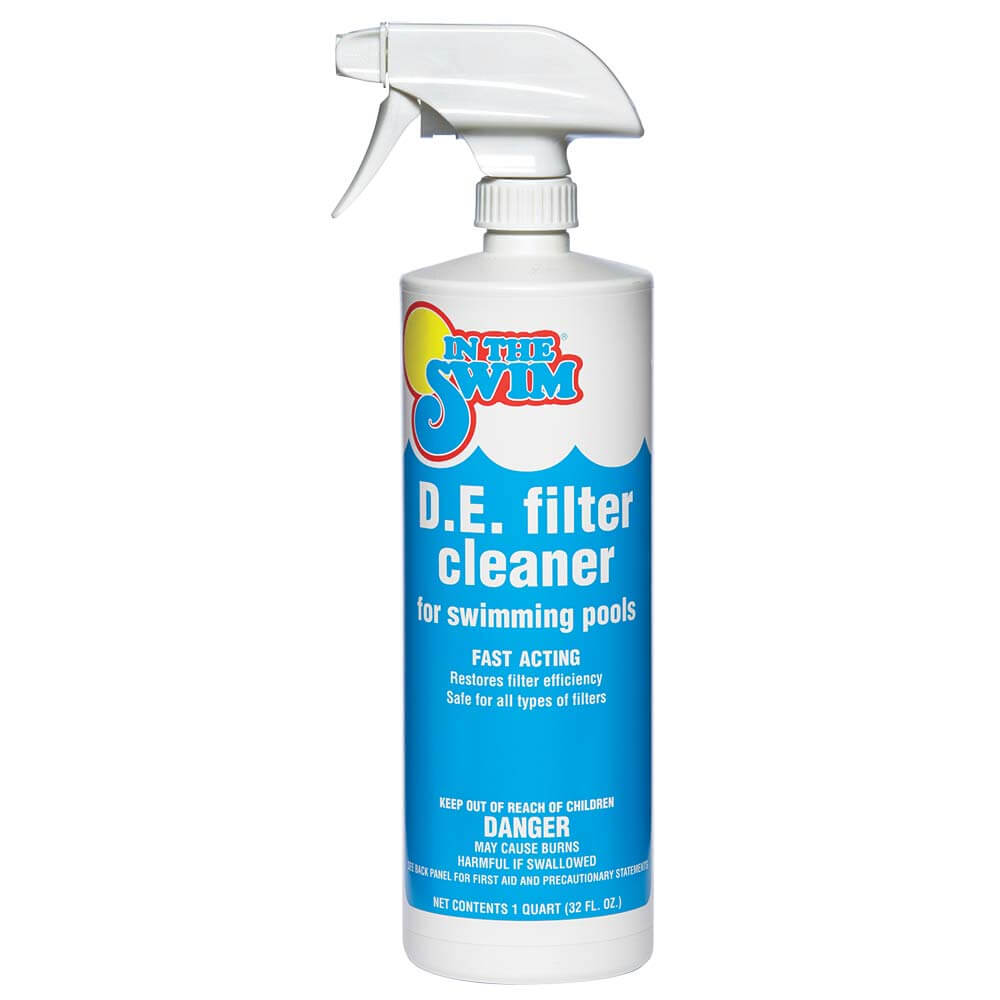
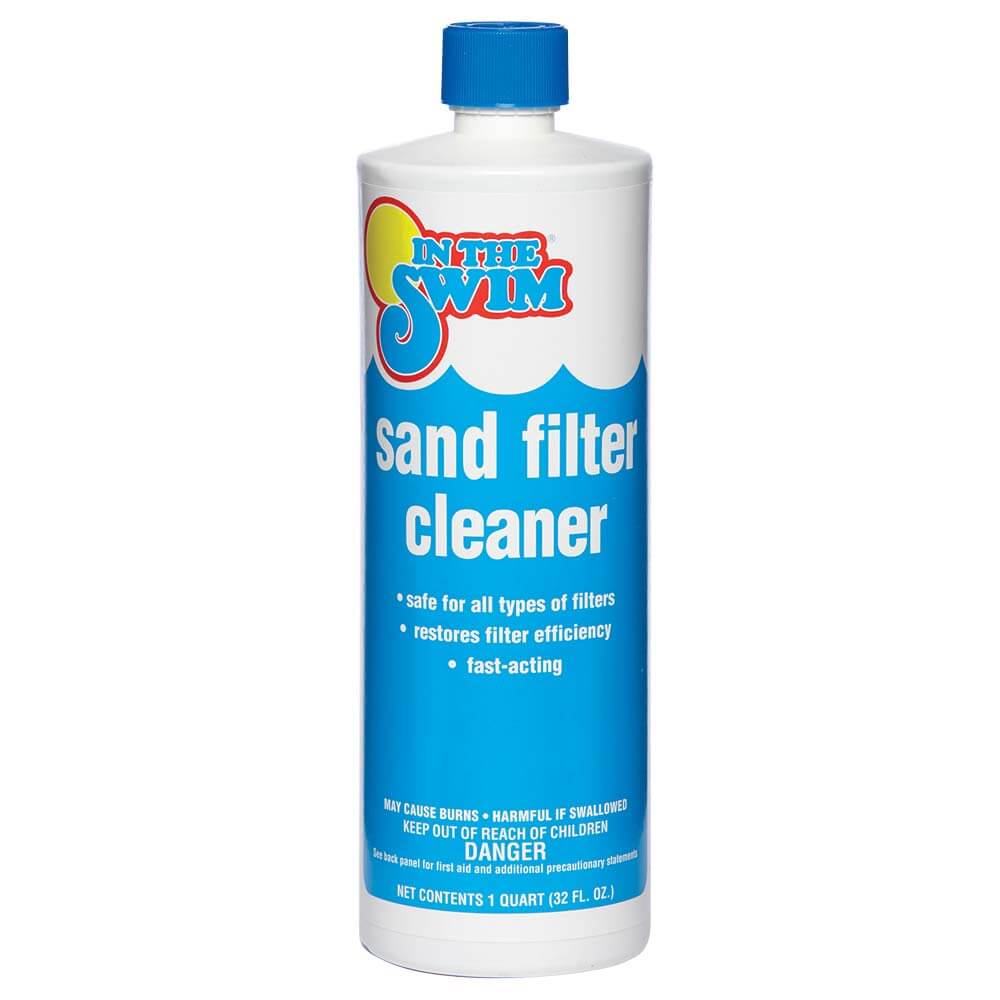
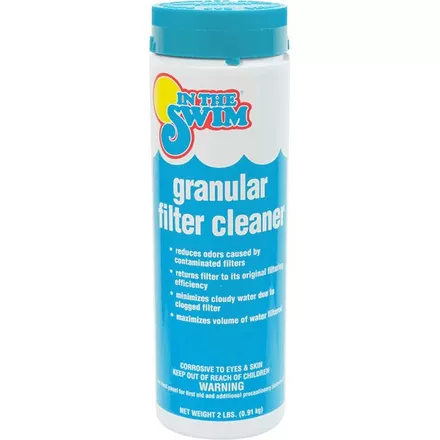
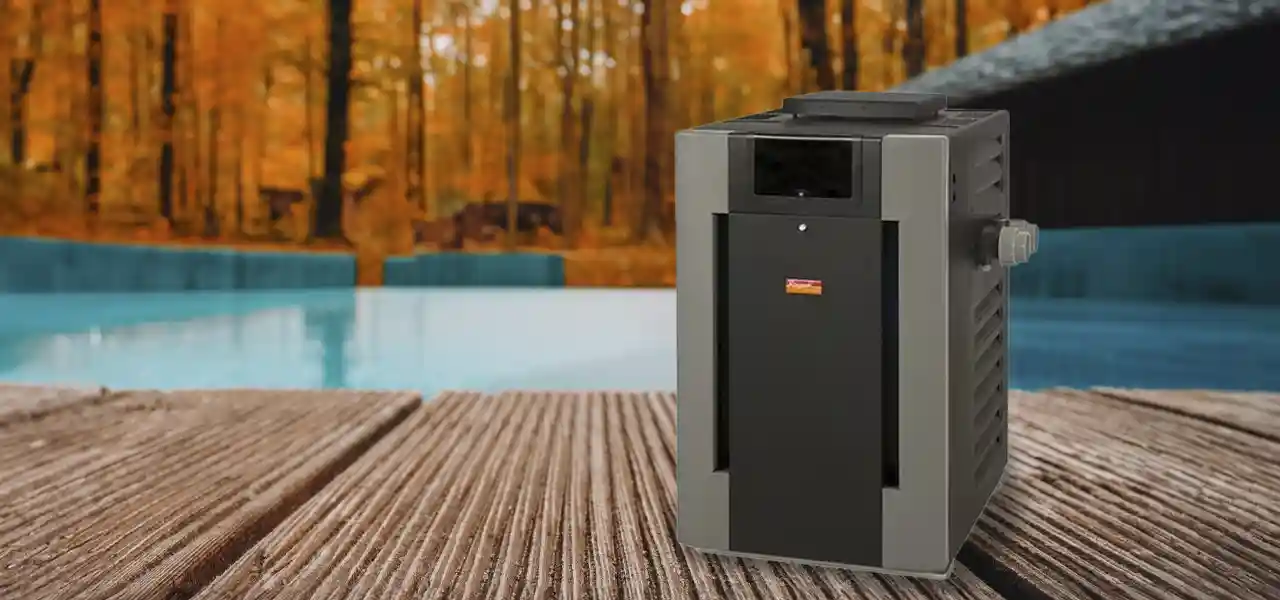
Pentair SMBW 4048 Filter issue. Filter will discharge DE into pool thru all 3 returns upon high motor RPM. Hayward VS 1.5HP. Settles down when run under 3000RPM.
Filter is 13yrs old. Still was working fine until a month ago.
1.replaced all 8 filter grids.
2.replace the manifold. Checked air bleed filters and hose. Both ok.
3.checked Backwash noryl rotary valve., no leaks, goes ok from filter to backwash and back.
What is left: Thinking about replacing the rotary. Don’t know if its worth it. Have you ever seen what kind of problem this valve causes? Can’t really keep the pool clean. When vacuume at 3000RPM or more DE discharges back into pool. Pool stays on the green side due to algae due to filter not working 100%. Any ideas, or is it time for a new filter?
Hi Ken, it could be the pump is too strong for the filter. Check the filter design flow rate on the label and compare it to the flow chart for the pump you have. I would also ask about the tightness of the grid assembly, and the spacing of the grids between the holding wheel on top, any odd spacing that may cause some gaps, where the grids enter the manifold? I would also ask about the Rotor valve gasket, maybe it is allowing DE to bypass?